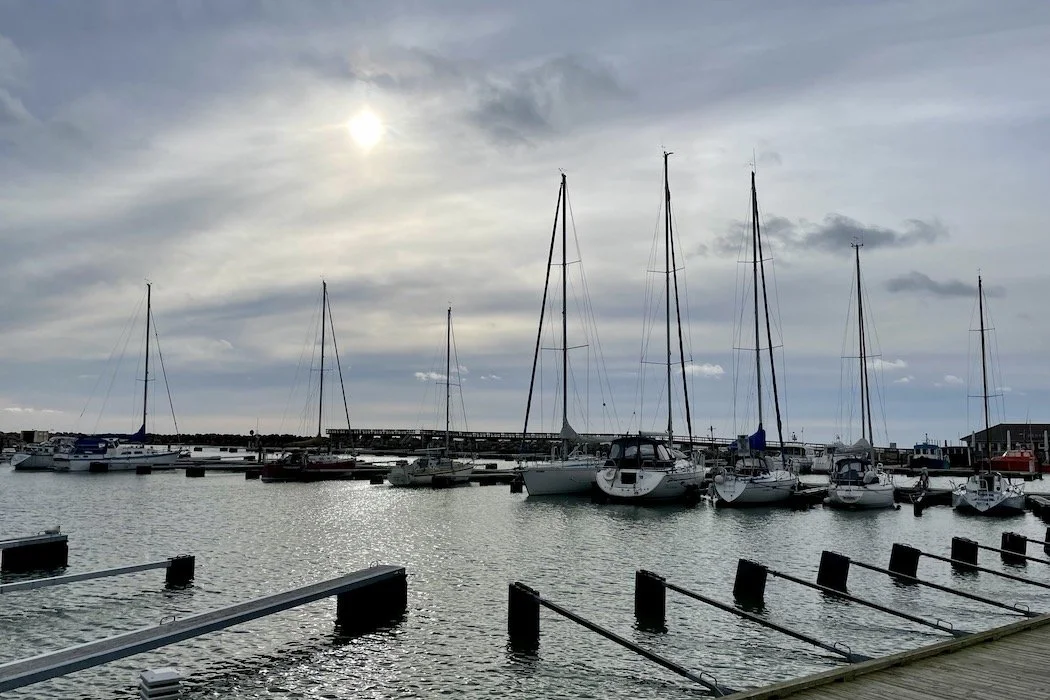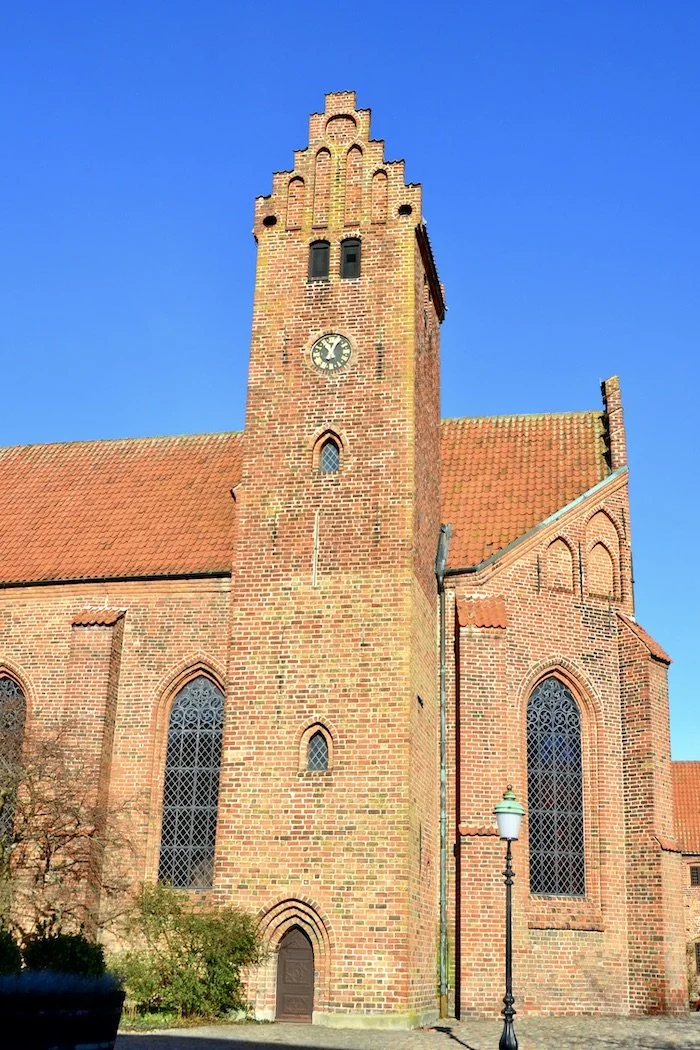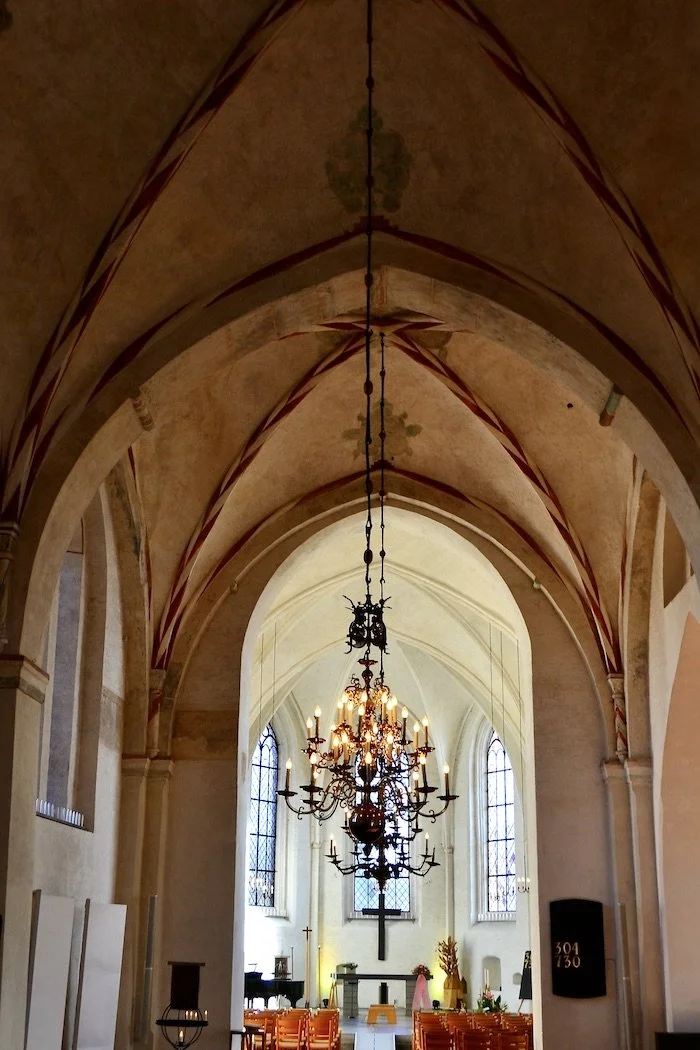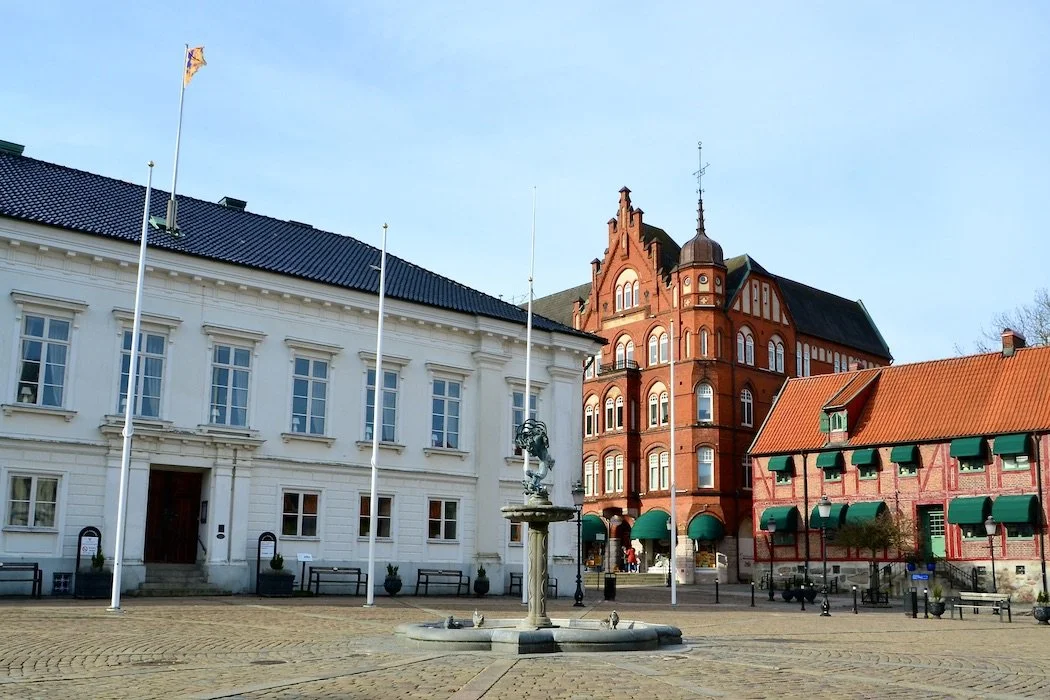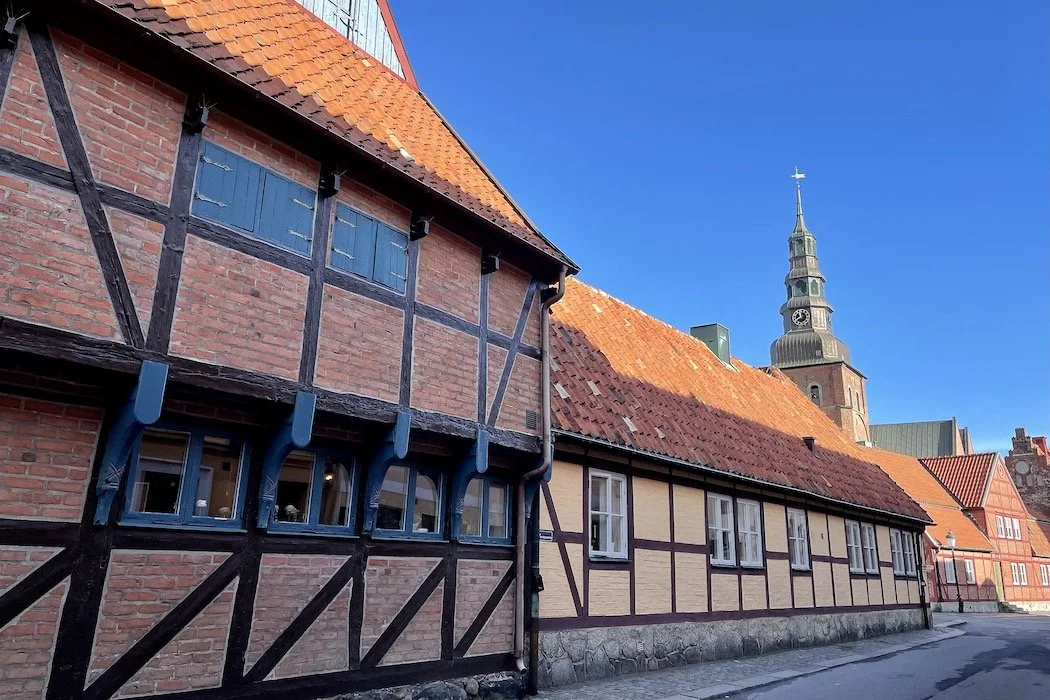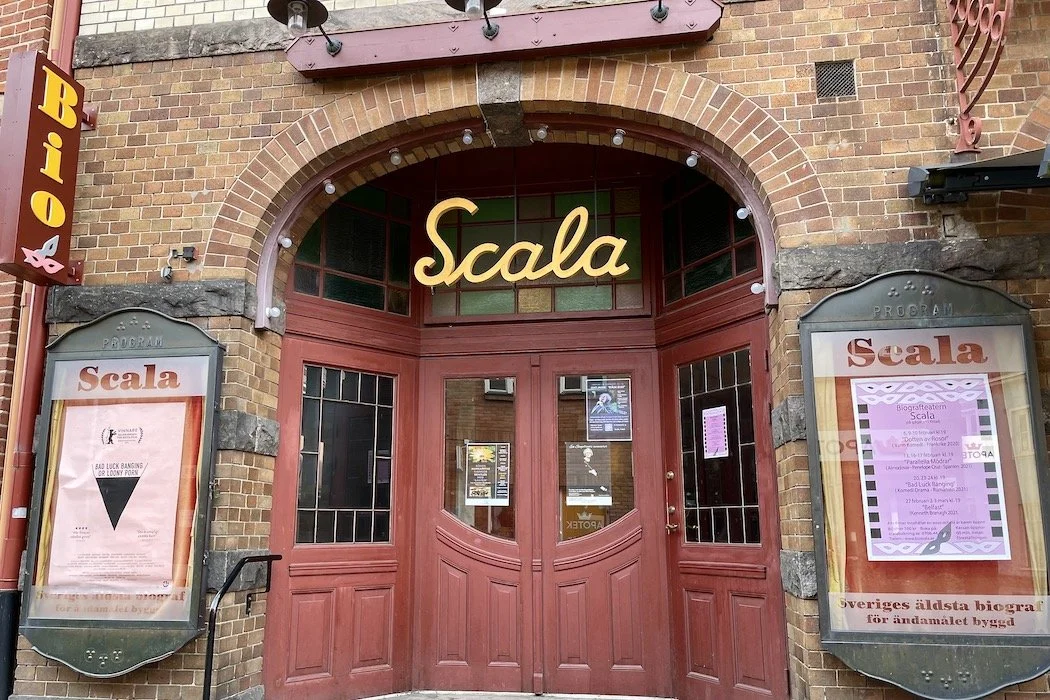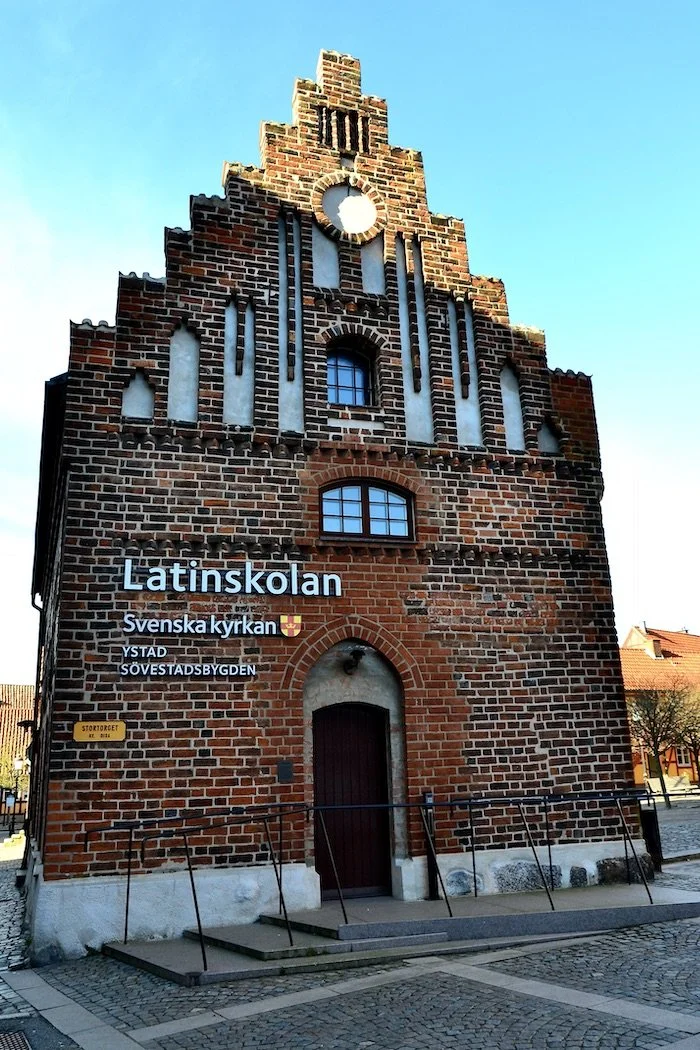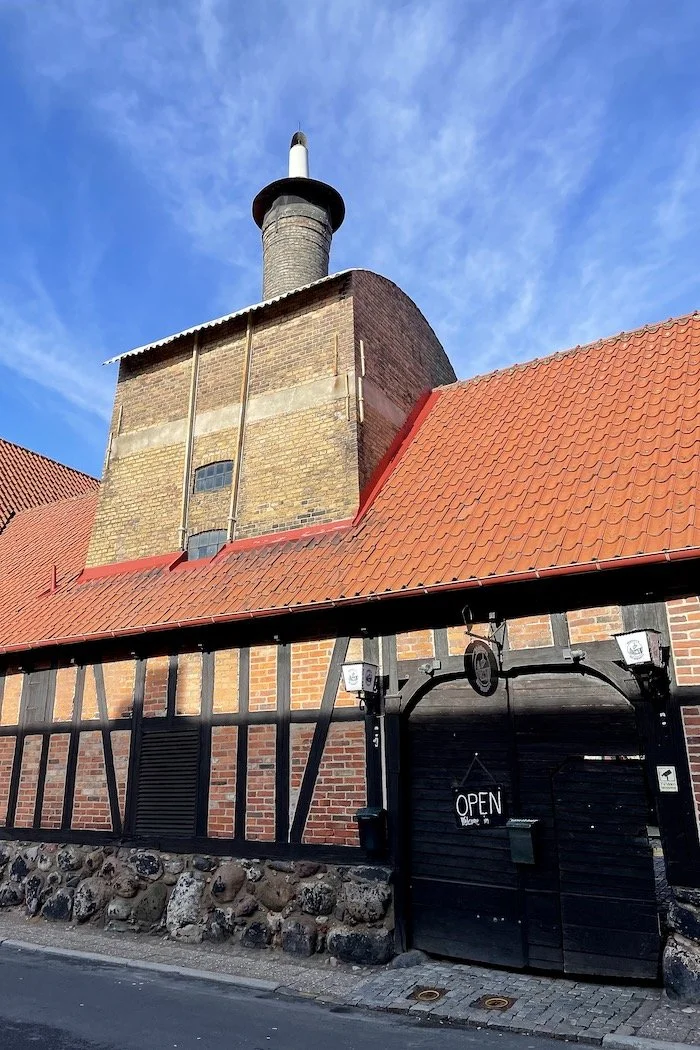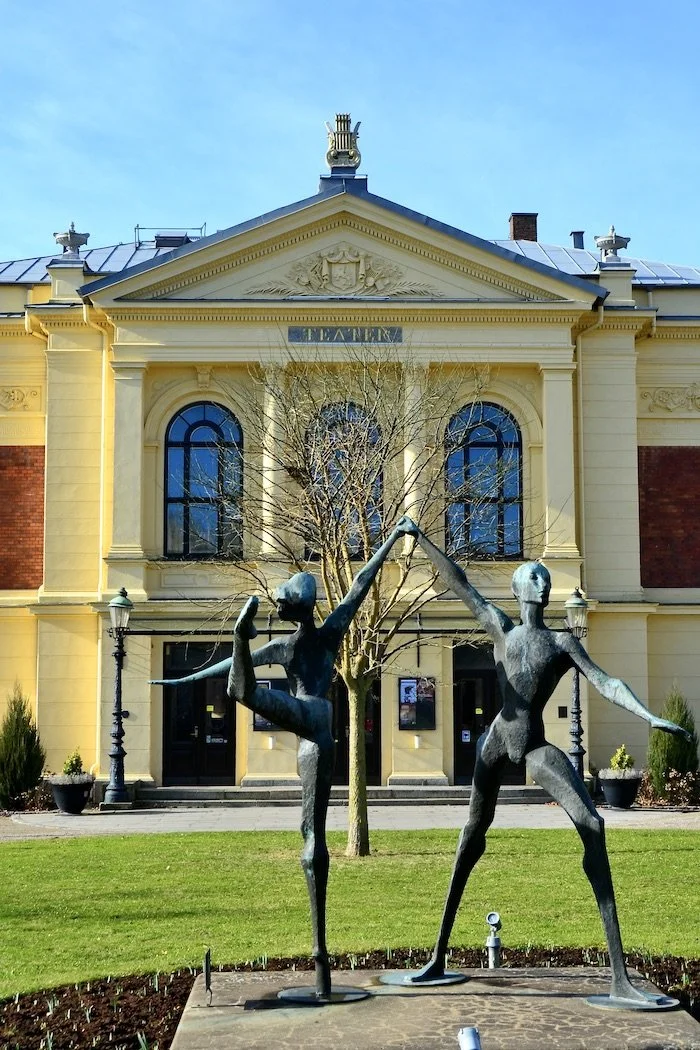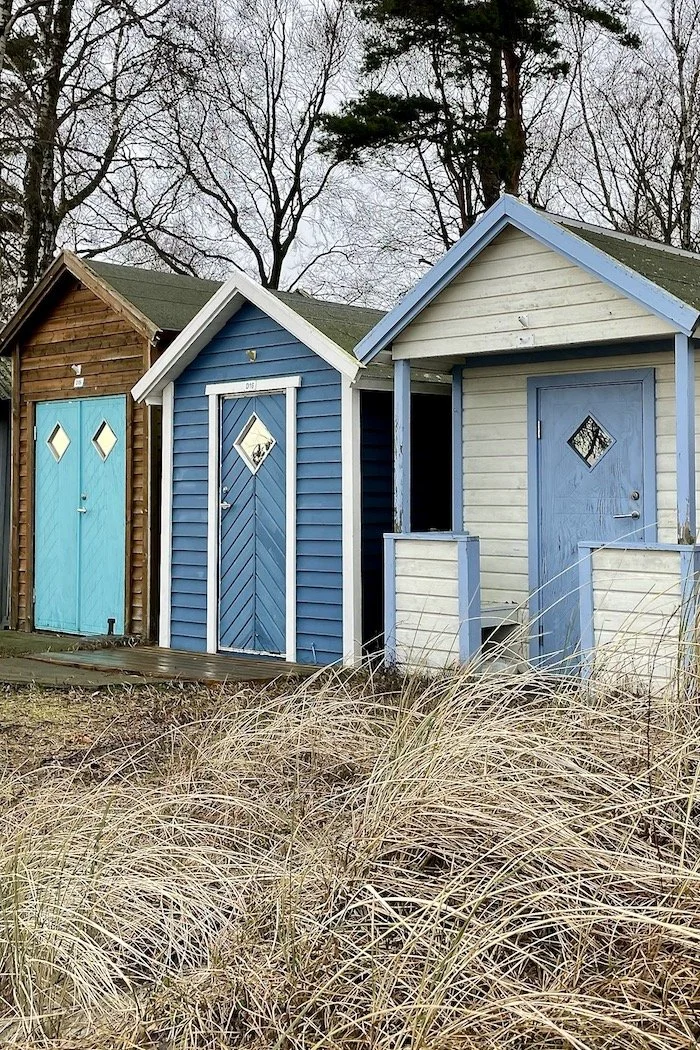Venture to Ystad in winter
Weak winter sun over Ystad marina
“What good is the warmth of summer without the cold of winter to give it sweetness.” — John Steinbeck
In the extreme south of Sweden on the seacoast in Skåne county, the lovely old city of Ystad has a small-town feel. It is a charming place to take a leisurely stroll, even in the winter, to explore and admire the more than 300 pastel-colored half-timbered houses that line cobblestone streets in Skåne’s best-preserved medieval town.
In the 12th century, after the era of Absalon, Archbishop of Lund, when peace came to this part of the Danish Kingdom, fishing families settled at the mouth of the river Vassa, finding the herring plentiful and a good source of trade. In 1244, when King Erik IV Ploughpenny visited, the town was first mentioned in the Lund Annals as Ystath, meaning “place of the yew tree”. The town grew and became prosperous in the 14th century through association with the Hanseatic League.
Ystad still boasts superb examples of Gothic brick Hansa-style architecture, like the Latin Schoolhouse, situated on the main square, Stortorget, next to the Church of the Virgin Mary. Also built of brick, St. Mary’s is Ystad’s oldest church, known for the night watchman who sounds his horn from the steeple every 15 minutes from 21:15 to 01:00 proclaiming the town safe from enemies and fire. A short walk away, Greyfriars Abbey, or simply the Monastery in Ystad with St. Peter’s church, has stood since 1267 surrounded by gardens of vegetables, healing herbs, and apples, along with fragrant rose gardens, just for pleasure. When the monks left after the Reformation, the abbey was used as a hospital, distillery, and then granary before being saved from demolition by local donations. Now, it’s a cultural history museum offering year-round exhibitions and activities.
Theater and film play an important role in Ystad. Sweden’s oldest cinema, the Scala, is here, and the town provides the location backdrop for the “Kurt Wallander” crime series, which is well-known throughout Scandinavia and Germany. Ystad Theater near the harbor, a large building in a small city, draws its audience from across the region.
Winter does lead to spring, and eventually to summer, at Ystad’s Saltsjöbad, a classic beach hotel located 1.6km (1 mile) from town that dates from 1897. A walk eastward along the delightful Nybrostrand beach reveals Victorian-style villas set back in the pine forest behind row upon row of “badhytter”. These tiny, colorful bathing huts are owned by the less well-heeled for changing into swimsuits and keeping belongings. If the wind and rain abate, rent a bike and ride 15 km (9 miles) east of town to the Ales Stenar, located on a hilly plain overlooking the Baltic. On this mysterious spot, 59 enormous boulders from the Iron Age lie in an elongated ship formation. A little further east lies Sweden’s best southern beach at Sandhammaren.
Though Ystad has not been part of Denmark since 1658 when Skåne was seeded to Sweden, it’s an easy 1 ½ -hour journey by train or bus from Copenhagen Central Station. That’s because ferries sail daily from Ystad harbor not only to Sassnitz, Germany, and Swinoujscie, Poland but also to Bornholm, Denmark’s easternmost island.
Don’s Miss:
Taking a blustery walk along the ocean to see the small, colorfully painted bathing huts.
Serendipity:
Locals along the way- Encountering a group of seniors playing Pentaque on a cold winter afternoon at the sailing club, who were ready to chat and offer a cup of hot coffee.
Lunch Tip:
Hos Malte tucked away on a side street in a half-timbered house, for excellent fish soup or a Swedish take on Danish open-faced sandwiches.
Bedtime:
Ystad Saltsjöbad for an indulgent old-world beach holiday atmosphere all year round.
Subscribe for inspiration to have my posts drop directly into your inbox. *If you enjoyed what you read, please share this post with like-minded travelers.*
*All photographs are mine, taken with my Nikon D3100 or iPhone 12 Pro.*

